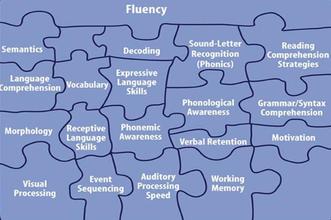How do children learn to read?
Most children start to read by learning to recognise whole words (cat, me, the). However, soon they are encountering so many complex words that they cannot memorize them all.
At this stage, they need to develop decoding skills, so they can ‘sound out’ unfamiliar words they encounter. To be able to decode words, a child needs to understand that:
At this stage, they need to develop decoding skills, so they can ‘sound out’ unfamiliar words they encounter. To be able to decode words, a child needs to understand that:
- Spoken conversation can be broken up into words, and words can be broken up into syllables and sounds
- The written letters on a page represent spoken words
- Each letter (or group of letters) represents a sound (or several sounds). For example, the letter 'c' can make a 'k' sound (as in cat) or a 's' sound (as in city), and the letters ow can make several sounds (as in how and low)
- Sounds can be blended together to make words
- Often there are rules that tell us which sound a letter will make (for example, the letter 'c' says 's' when followed by the letters 'e', 'i' or 'y')
The Processing of Sounds

Phonological awareness, or knowing that words are made up of sounds and syllables, is an important skill for beginning readers. To learn to read it is necessary for the child to have the ability to notice, think about and manipulate the individual sounds (or phonemes) in words. Phonemes are the smallest units of sound in our language that can make a difference in the meaning of a word (as in cat vs rat). Phonological awareness is an auditory skill. A child may have satisfactory hearing but still not be able to recognise phonemes in context.
Many of the children who struggle to acquire reading skills have difficulties with phonological awareness skills such as:
Many of the children who struggle to acquire reading skills have difficulties with phonological awareness skills such as:
- Identifying rhyming words
- Perceiving the difference between similar sounds (for example, mand n)
- Identifying the first sound in a word
- Remembering the sequence of sounds in a word
- Blending sounds together to form words
- Breaking words into syllable
- Read the words accurately and fluently
- Remember what has been read
- Understand:
- punctuation markers, such as full-stops and question marks
- what each word means, and be able to figure out the meaning of any unfamiliar words
- how sentences are constructed
- differences in types of text (for example, a fairy tale is constructed in a different way to a newspaper article)
- Use higher-order thinking skills to: understand the main ideas, make accurate inferences and predictions, and evaluate the information
